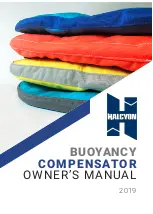
S-AD-M-005
Chapter 1: System Overview
January 2006—Page of 35
2
Ya. B. Zel’dovich and Yu. P. Raizer, “Thermal Radiation and Radiant Heat Exchange in a Medium,” in Physics of Shock
Waves and High-Temperature Hydrodynamic Phenomena, edited by W. D. Hayes and R. F. Probstein (Academic Press,
New York, 1966), Chap. II, Vol. I, pp. 107–175.
(a)
A strong shock wave may be sent through a sample using the long-pulse UV beams. This
method is extensively used for EOS experiments but it allows one to access points on the
principal Hugoniot only.
(b)
Isentropic (shockless) compression can be achieved with a carefully shaped pressure drive
coupled to the appropriate target design. This method permits access to the high-density,
low-temperature region of phase space that is of special relevance for geophysical and
planetary science problems and the study of metallic hydrogen.
(c)
The target may be heated isochorically by penetrating radiation, with little decompression,
to access the solid-density, high-temperature, high-pressure region of phase space. The
penetrating radiation can be hard x rays, fast electrons, or fast protons produced during
the interaction of a short, high-intensity laser pulse with matter, or thermal conduction
resulting from ultrafast-laser absorption in the plasma corona. This method allows the
opacities of partially and fully degenerate matter (warm dense matter) to be studied.
1.1..1 Equation of State Measurements of Materials
Knowledge of the EOS of materials, including those used in above ground experiments (AGEX), is
of paramount importance to the SSP. Many conditions of interest require shock waves driven at megabar
pressures, and the EOS of materials at these pressures is often unknown.
The OMEGA EP system will significantly extend the range of conditions and materials that can
be tested with OMEGA because of the higher laser-driver energy and the increased number of shots
available. The OMEGA EP target chamber will be configured to accommodate a VISAR
1
(velocity
interferometer system for any reflector) diagnostic to determine the EOS and will be compatible with
the OMEGA planar cryogenic target positioner.
These experiments make use of the “impedance matching” method described in Zel’dovich and
Raizer.
2
A reference material with a known EOS is placed next to a material of unknown EOS, and a shock
wave is propagated from the former material to the latter. Measurements of the shock speeds through the
two materials allow inference of the pressure and particle velocity in the material of unknown EOS.
EOS experiments on OMEGA EP will involve the use of all four UV beams to drive a package
or three UV beams for the drive and one as a backlighter. There is interest in EOS data at pressures
from kilobars to tens or hundreds of megabars, requiring intensities in the range of 10
11
to 10
16
W/cm
2
.
A nominal 1-mm-diam spot suffices for most of these experiments, but the extreme intensities require
spots ranging from 0.5 to 3 mm in diameter. Drive pulses are typically square in time and range from 1
to 10 ns in duration. The packages have various types of shields (typically with a 10-mm diameter). The
target thicknesses (ablator plus pusher plus sample) are of the order of a few hundred microns, and the
individual component thicknesses are determined by the shock dynamics (rarefaction and reverberation)
to produce steady and planar conditions in the sample. OMEGA EP will allow for the use of phase
plates, although none are included in the baseline project.
1
Note that VISAR is not a baseline diagnostic for OMEGA EP, but it could be implemented.
Summary of Contents for Volume VII-System Description
Page 38: ......










































